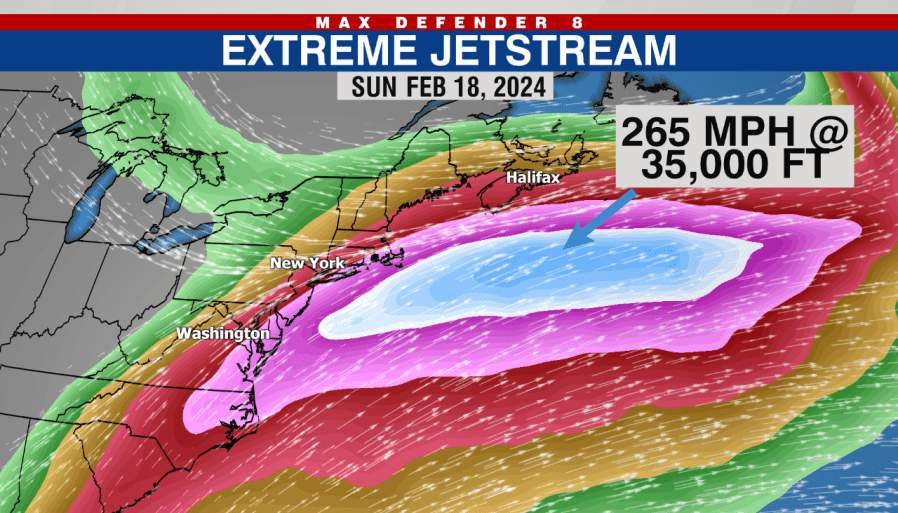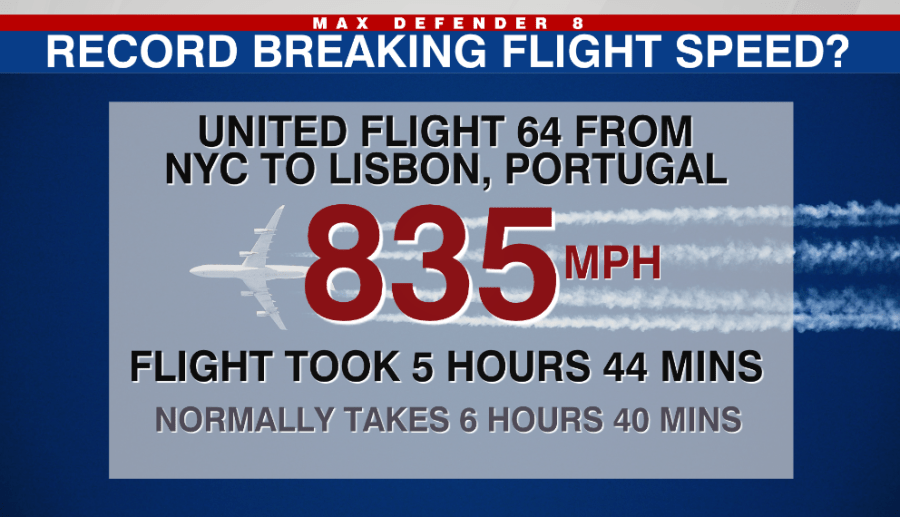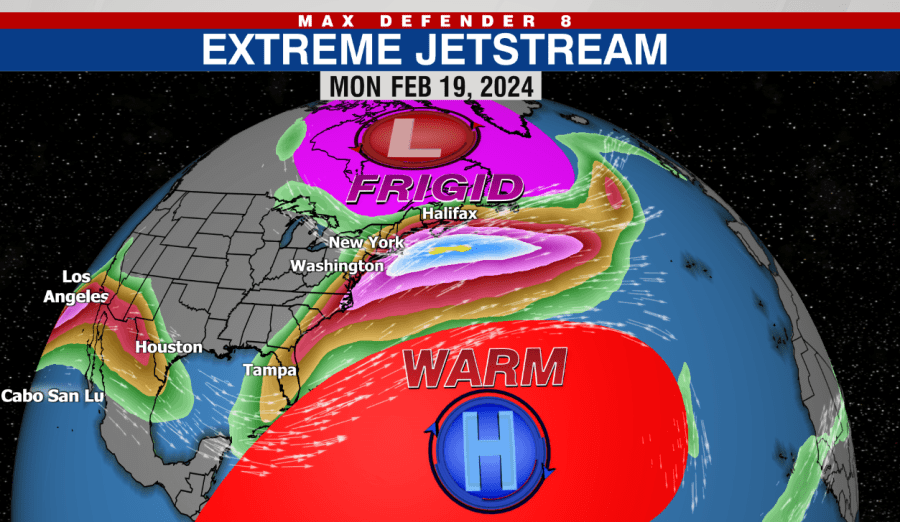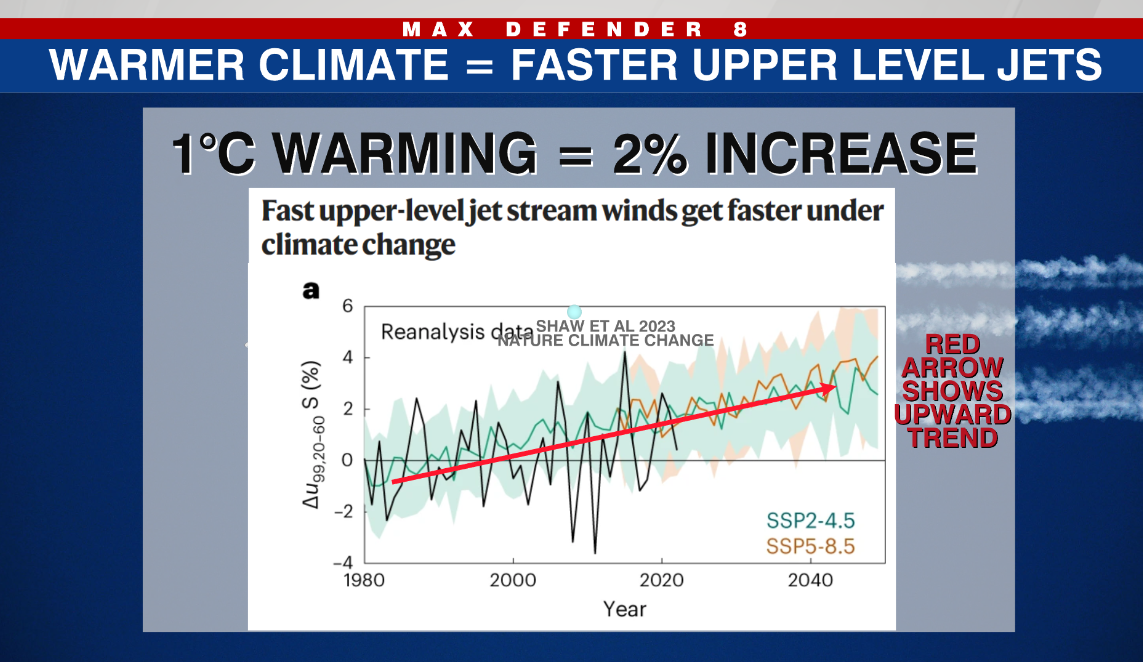TAMPA, Fla. (WFLA) — A jet stream over the Atlantic was so strong last week, it pushed multiple flights to their destinations way ahead of schedule, the Washington Post reported.
According to the Post, data from FlightAware showed a Virgin Atlantic flight from D.C. to London landed 45 minutes early after high winds bolstered the plane to a peak speed of 802 mph, once it entered the stream just east of Long Island at 11:20 p.m. Saturday.
Once it left the stream, the Boeing 787 slowed down and was traveling between 600 and 700 mph, slightly faster than the typical cruising speed, the Post reported.
The newspaper notes that 802 mph is faster than the speed of sound (767 mph), however, the plane did not break the sound barrier.
“Although its ground speed — a measure that combines the plane’s actual speed and the additional push from the wind — was greater than the speed of sound, it was still moving through the surrounding air at its ordinary cruise speed, ” the Post reported. “It just so happened that the surrounding air was moving unusually fast.”

At the time, winds were at 265 mph high over Washington — at about 35,000 feet above ground, where planes typically fly.
“For those flying eastbound in this jet [stream], there will be quite a tailwind,” the NWS wrote on X, formerly Twitter.
Flight tracking data showed another Boeing 787, a United Airlines flight from Newark, N.J., to Lisbon, Portugal, reached a peak ground speed of 835 mph, and arrived to its destination an hour early.

Meanwhile, American Airlines Flight 120 from Philadelphia to Doha, Qatar, reached a peak speed of 840 mph, among the highest on record, according to the Post.
Jet streams are bands of strong winds that typically blow from west to east in the upper levels of the Earth’s atmosphere. They are between four and eight miles in height and can reach speeds of more than 275 miles per hour, according to the National Oceanic and Atmospheric Administration.
News Channel 8’s Chief Meteorologist and Climate Specialist Jeff Berardelli said two reasons explain why the wind was so strong on Saturday.
A stream over Florida moved north to the middle Atlantic and converged with another stream from the Great Lakes.
“You can think of convergence as walking between two big buildings in the city, and the winds being squeezed and funneled in between,” Berardelli explained.

Jet streams are the strongest during the winter when air north of the stream is colder and air to the south is warmer. Since the air is cold in Canada and warm over Florida, the “contrast between cold and warm causes the winds to blow faster,” he explained.
“Recent studies have found that some jet stream winds get faster as the climate warms,” Berardelli added. “This is true especially in the upper levels because the temperature contrast and moisture contrast high up in the atmosphere is increasing between the Poles and the Equator. This sharper temperature/ moisture contrast drives stronger winds.”

Passengers flying through a jet stream may feel light turbulence, but it’s nothing compared to traveling through a thunderstorm, former commercial pilot John Nance told ABC News.






